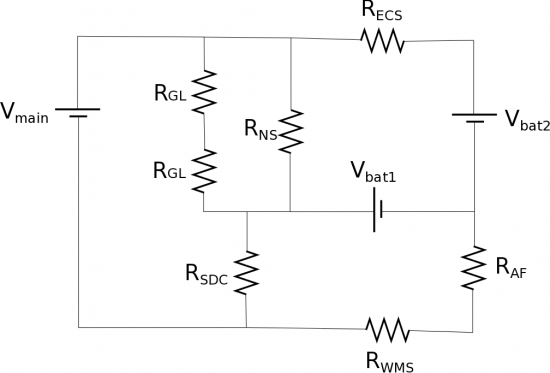Project 6
Project 6A: Design a Defib
The Artemis 13 has launched and T.R.O.J.A.N force is on board and currently hanging in lower Earth orbit. You and a team of scientists are testing the life support systems for extended space travel aboard the ship. During a training exercise, your android co-pilot Johnny 5 begins to malfunction, it is essential that Johnny 5 not lose all power as he has an important role in the mission. Andrea Baker, the team leader mentioned that in a training video she saw back in the 80's call “Short Circuit 2” a model like Johnny 5 was brought back to life using a defibrillator.
You run to the medical bay and grab the defibrillator and rush back to Johnny 5. When you go to charge the defibrillator, however, you notice that the instruments are not reporting a proper charge. In order to not risk the safety of Johnny 5 by shocking him with faulty equipment, you decide against pressing the button and shouting “clear.” You need to save Johnny 5. Using your knowledge of electromagnetism, you know you can create a makeshift piece of equipment to be able to stabilize Johnny 5.
You run to the stock room downstairs only to discover that it isn't fully supplied yet. The launch of the spacecraft was rushed in order to complete the mission. You do find sheets of aluminum, and various paper sheets, some electrical tape and wires, and a pair of all-purpose scissors.
The defibrillator must be able to deliver 360 J to Johnny 5 in order to stabilize him. Can you fix the instrument and save him?
The paper sheets are 0.5 m wide, 2 m in length, and vary in thickness (2 mm, 1 mm, 500 $\mu$m, 50 $\mu$m, 1 $\mu$m, 0.5 $\mu$m). The aluminum sheets are 0.80 m in length, 0.5 m wide, and 0.3 mm in thickness. The defibrillator has a high voltage power supply of 30 kV.
Learning Goals
- Explain how a capacitor charges and discharges
- Explain what changes about your capacitor when you have a dielectric
- Explain why you add a capacitor to a circuit and what would change about the circuit.
Project 6B: Artemis's Last Hope
Part 1:
After you stabilized Johnny 5, team leader Melissa Lewis decides Artemis 13 needs to go home before anything else happens. Just as she gives the order to rotate boosters in order to send the ship home, the crew feels the spacecraft rock violently and warning lights start going off everywhere. The command ship starts to lose all of its power (maybe it had something to do with not being able to get the special tape from the STICKYSTUFF corporation at Lakeview). After a quick investigation, it turns out that the circuit that controls all of the key systems is currently drawing too much current from the battery. You are in constant communication with Austin about the issues you are encountering and a bright but intense intern proposes a risky but possibly brilliant solution. They want to take two batteries from the mostly dead Command Ship and use them to help power the Artemis. In addition to the 230 V main battery, they say they need 140 V ($V_{bat1}$) from the Command Ship battery and only 5 V ($V_{bat2}$) from the backup battery to get them home. From the ship manual you find the following resistances for different components that need to be powered in order to get you all home:
- Gauge Lights: $R_{GL}=100\Omega$
- Navigation System: $R_{NS}=700\Omega$
- Steering/Direction Control: $R_{SDC}=950\Omega$
- Engine Cooling System: $R_{ECS}=500\Omega$
- Air Filter: $R_{AF}=300\Omega$
- Waste Management System: $R_{WMS}=425\Omega$
Will this circuit work without drawing any more than the 0.35 A from the main battery?
Learning Goals
- Use resistor combination rules to simplify a complex circuit (or parts of a complex circuit)
- Recognize when resistor combination rules do not apply
- Use loop rule and current rule to analyze a complex circuit
